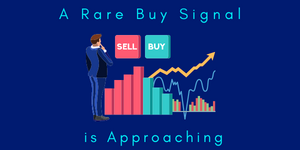
A Rare Buy Signal is Approaching
Fear is high. De-risking is at levels not seen since March 2020.
That’s the bad news. The good news is where I’m going to focus today. When selling is this intense, a rare buy signal is approaching.
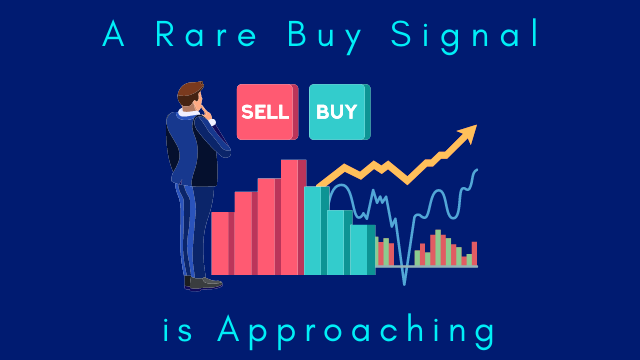
Look, the past month has been brutal for stocks. Since March 29th, the S&P 500 (SPY ETF) is down 13.53% and the NASDAQ 100 (QQQ ETF) fared worse, falling 18.97%.
Action like this is nauseating to sit through. When the crowd sells stocks in mass, it gets downright ugly. That’s where we are now. But on the flip side, that’s also when opportunity arrives in a big way.
Market bottoms aren’t made when buyers are rejoicing in the streets. Lows are hit when everyone throws in the towel. They give up.
Now, I can’t tell you exactly when this selloff will end. But what I can say is this – a rare buy signal is approaching.
Today we’ll size up the Big Money picture and compare it to recent periods with similar action. From a data standpoint, selloffs have a lot in common. And big drawdowns often precede massive rallies. So, hang in there.
Let’s dive into some data.
Big Money Index is Almost Oversold
The last few weeks have seen relentless selling. When buyers disappear, our Big Money Index falls in a straight line. This is a huge change from the rotational action we watched for nearly a year. In fact, the BMI sits at a level not seen since April 2020.
As the index falls, sellers are in control. When it approaches oversold, correlation is high. That means all stocks feel the heat.
That’s been the case for the past 3 weeks. Below you’ll see how the BMI (blue line) is at levels not seen since the pandemic lows:
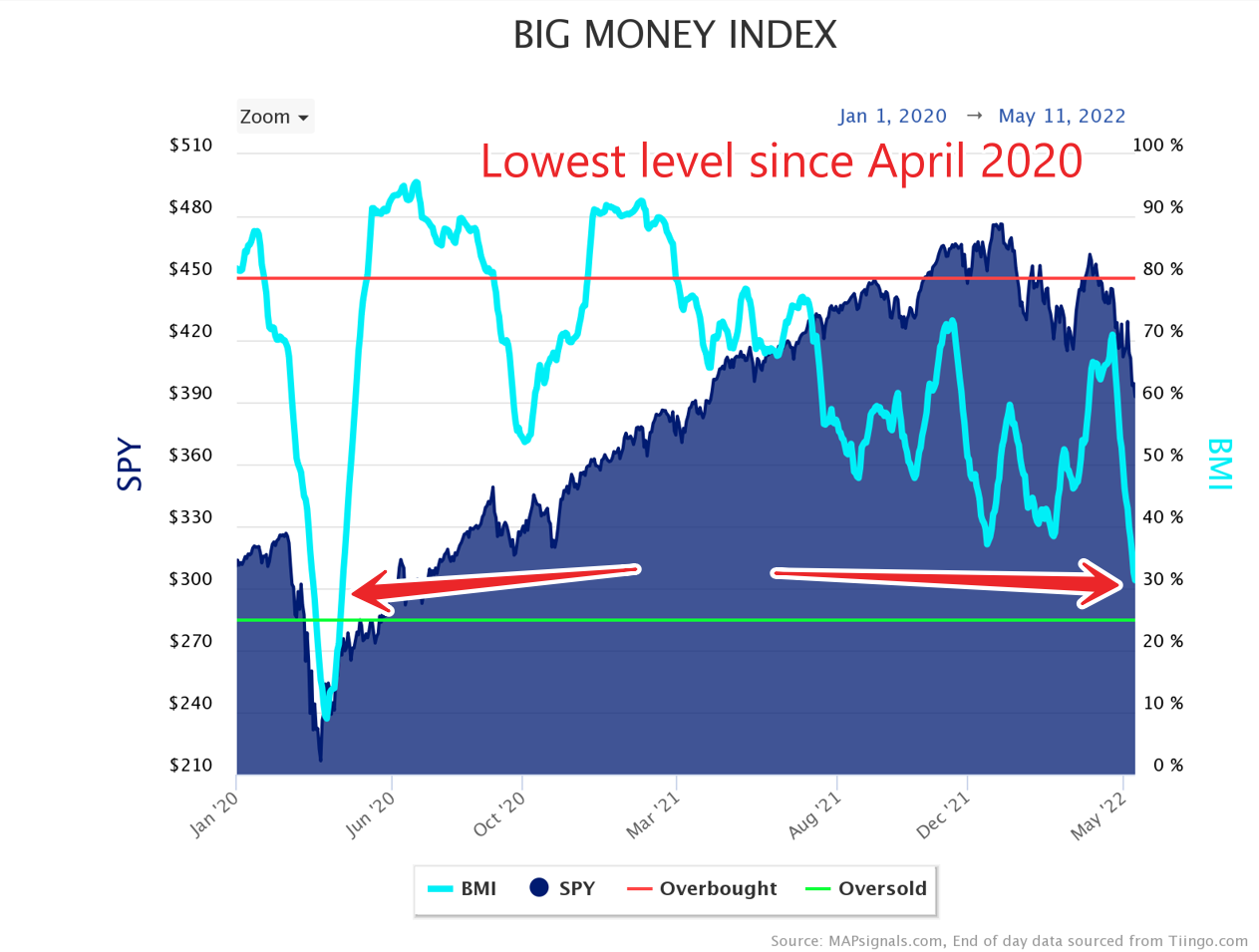
Currently the reading is 32%, meaning the ratio of buys to sells is 68% in favor of sellers. That’s heavy selling. As a reminder, a 25% reading is when we hit a true oversold measure. Chances are we’ll see it in the coming week or so.
But it’s important to put major selloffs, like now, into context. Often, investors see huge pullbacks and think we’re covering “new” territory, but in reality, we’ve had plenty of similar-style repricings in the past.
To show you what I mean, let’s look under the hood at the daily buys and sells of stocks. These are the signals that drive the BMI.
There are a couple things to point out. First, buyers have dried up dramatically. And 2nd, Monday’s pullback saw the single biggest day of stock selling in 2022:
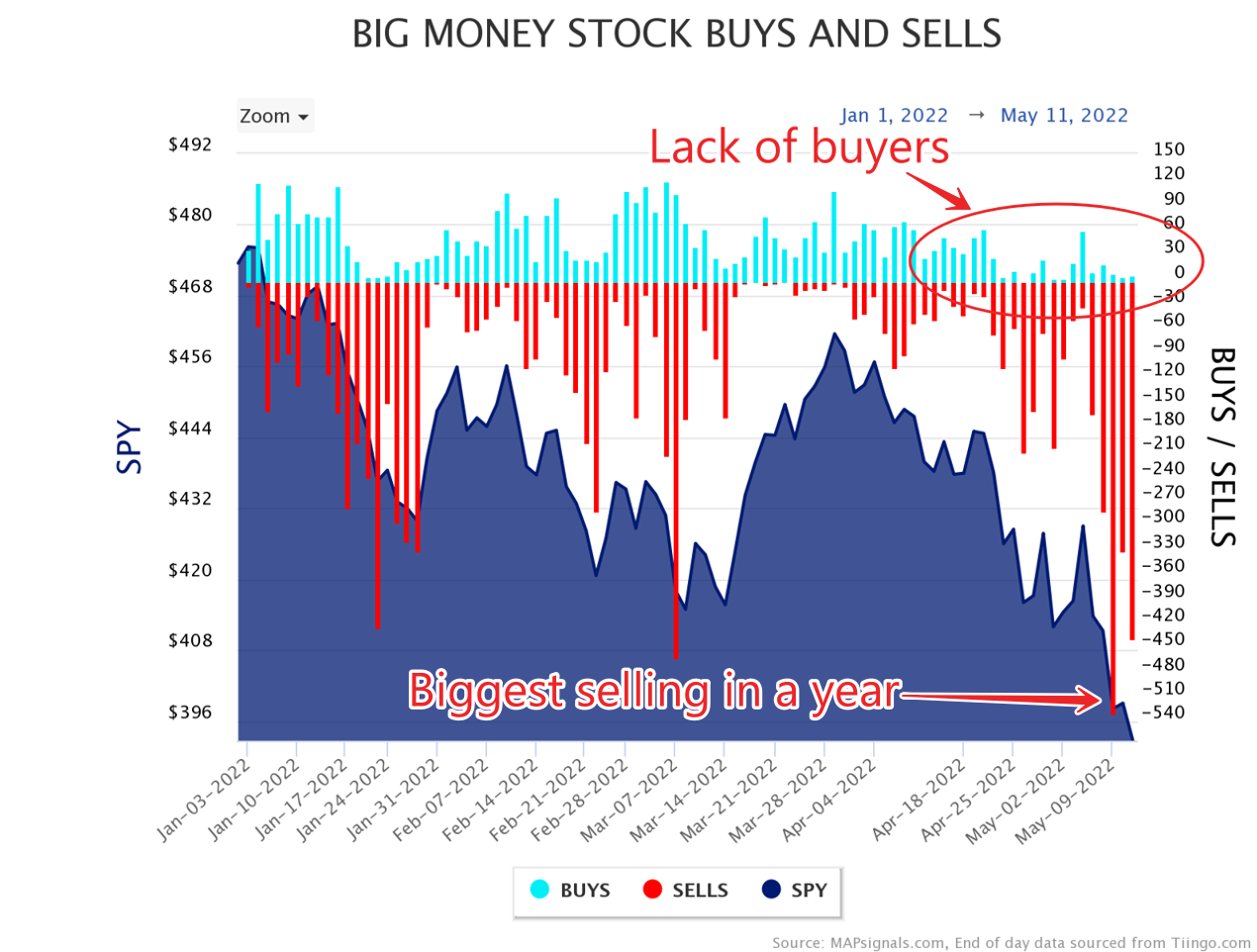
In fact, 530 stocks were sold. We’d have to go back to March 2020 to see worse action. But get this, in nearly all oversold periods, it took this kind of onslaught to reach oversold. So for comparison, we’ll check out a handful of oversold instances.
Below are snapshots of the last 6 oversold periods. I want you to notice a few things:
- Massive selling often marks a bottom
- Arrows point to the day the BMI went oversold
- Usually, stocks rip higher once oversold
Up first is the March 2020 pandemic. I recall it vividly. When oversold triggered, we sent out our buy notice in a post titled, Send the Marines. Notice how selling dried up shortly after oversold was reached:

Those big red bars are hundreds of stocks getting sold into oblivion…just like what’s going on now.
The next 2 oversold periods hit in late 2018. October saw stocks stage a relief rally after reaching the green zone. December reached oversold and then markets zoomed:

Like today’s data, the troughs tend to be once the BMI falls below 25%. Next is February 2016. The same pattern emerges. Huge selling gets us oversold, then markets rip:
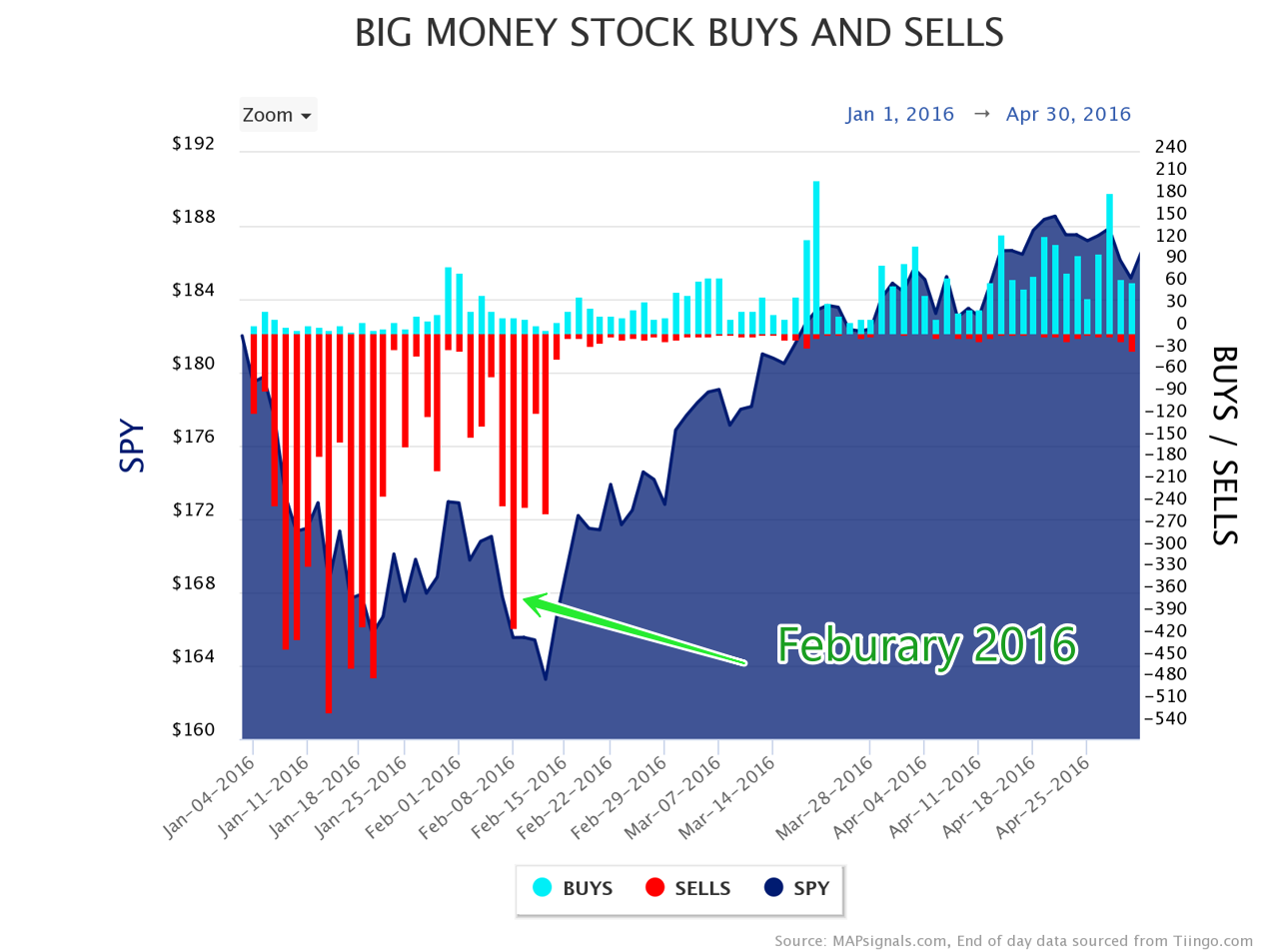
Now see September 2015:
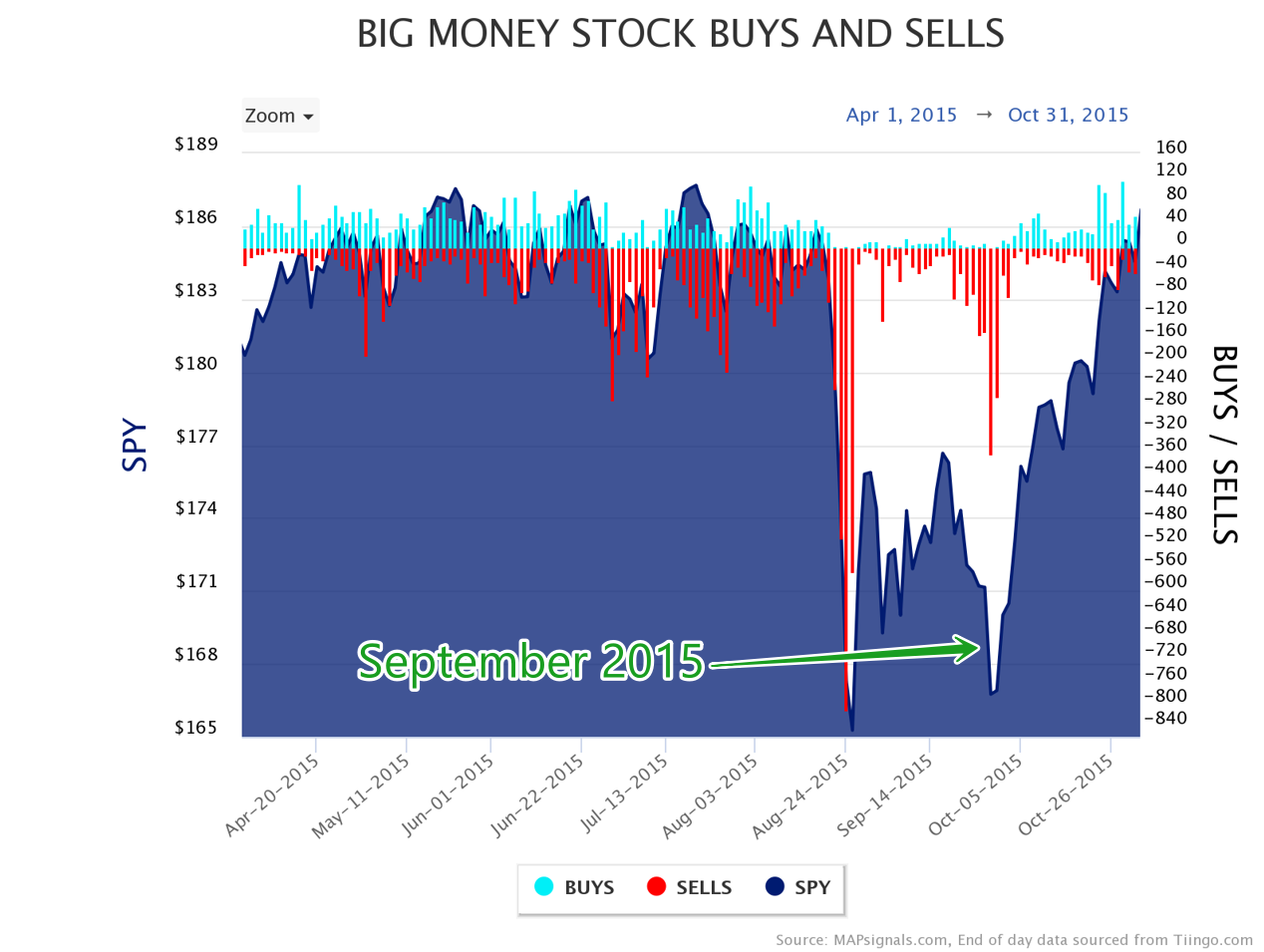
Finally, notice how October 2014 has a similar feel too:
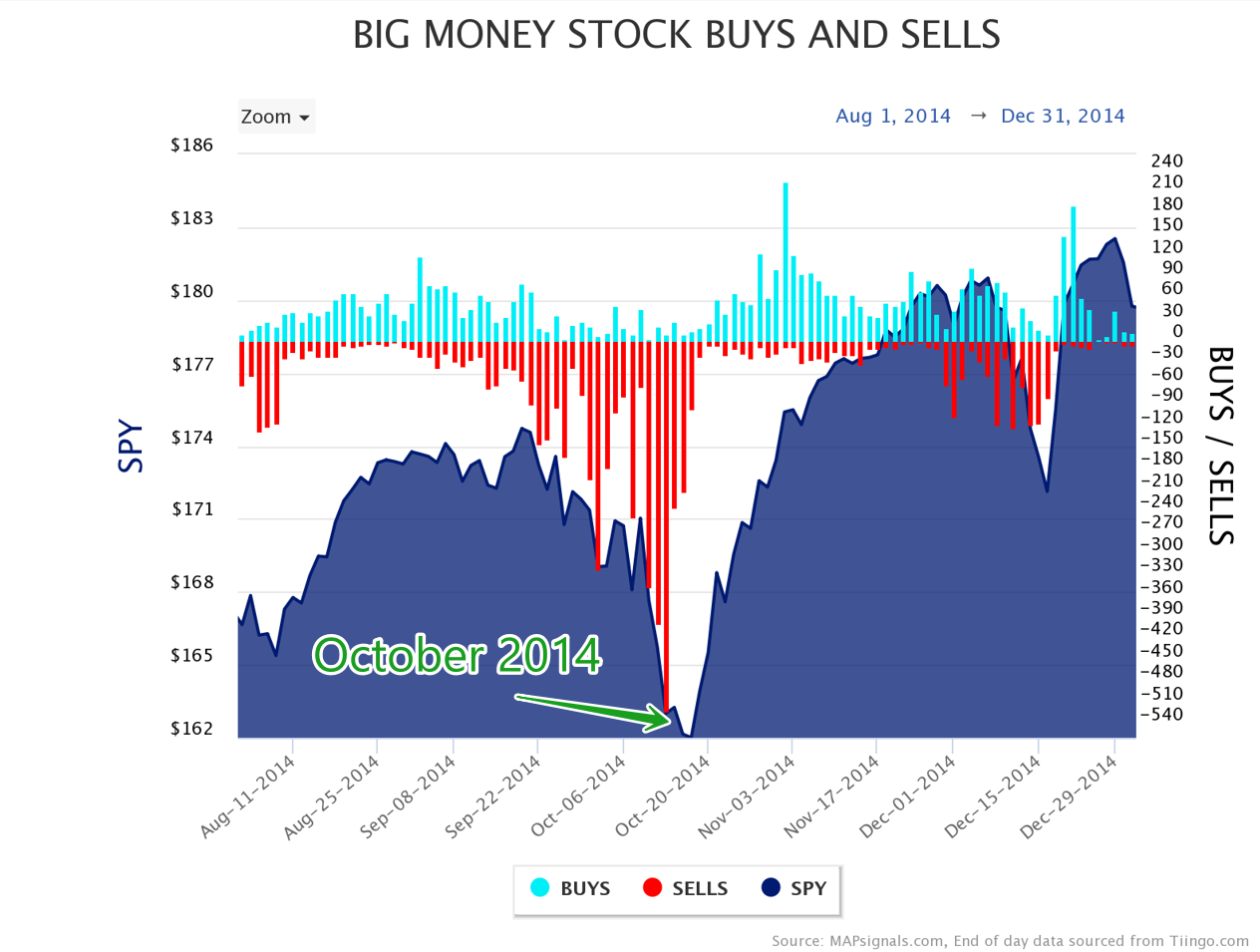
Each of these wipeouts, show a recurring playbook. First, selling reaches unsustainable levels, then it eventually exhausts itself, which leads to eventual buyers.
And it’s why when the BMI dips too far, it’s a flashing opportunity. That’s why it’s paramount to set aside emotions when markets are in panic mode. Based on history, a rare buy signal is approaching.
A Rare Buy Signal is Approaching
Let’s now go back further. Since 1990, we’ve had only 20 instances where stocks were oversold. They’re scarce. Based on 30+ years of data, only 5% of trading days are in the green zone.
These 5% moments are tail events. They’re opportunity.
To finally drive home the point, below are all 20 prior oversold periods. You’ll see the date we went oversold and the forward returns for the S&P 500. On average, stocks are massively green months and years later:
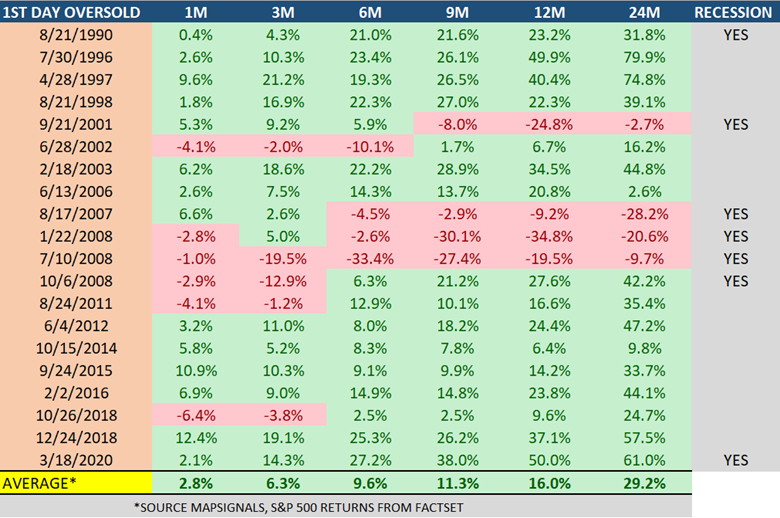
If you’re like me and you want a positive message in stock land, here it is. The window of opportunity usually comes along when fear is abundant. After the BMI dips below 25%, the average 2-year performance for the market is nearly a 30% gain.
Look, no one has a crystal ball. No one knows when this meltdown will stop. But, it’s hard to argue with stats like that. When the investing world is turned upside down, I look to data for answers.
Let’s wrap up.
Here’s the bottom line: A rare buy signal is approaching. We’re likely days away from an oversold Big Money Index.
Monster pullbacks in our data look and feel similar: selling reaches a climax and eventually exhausts itself, paving the way for greener pastures.
Opportunity is coming.
***And if you want to follow our BMI daily and other cool data-driven insights, get started with any level of MAPsignals subscription here. Let data improve your investing process.
